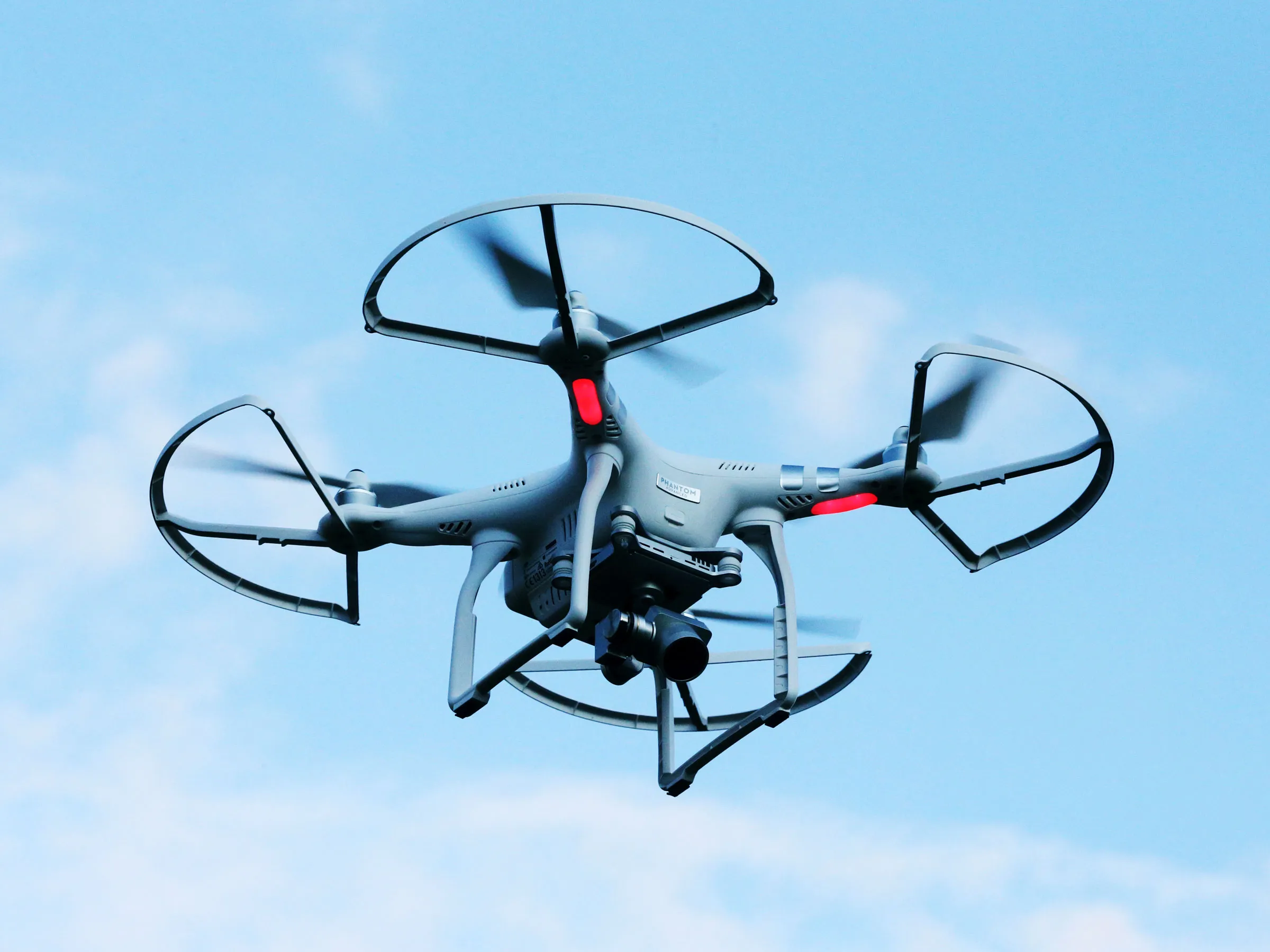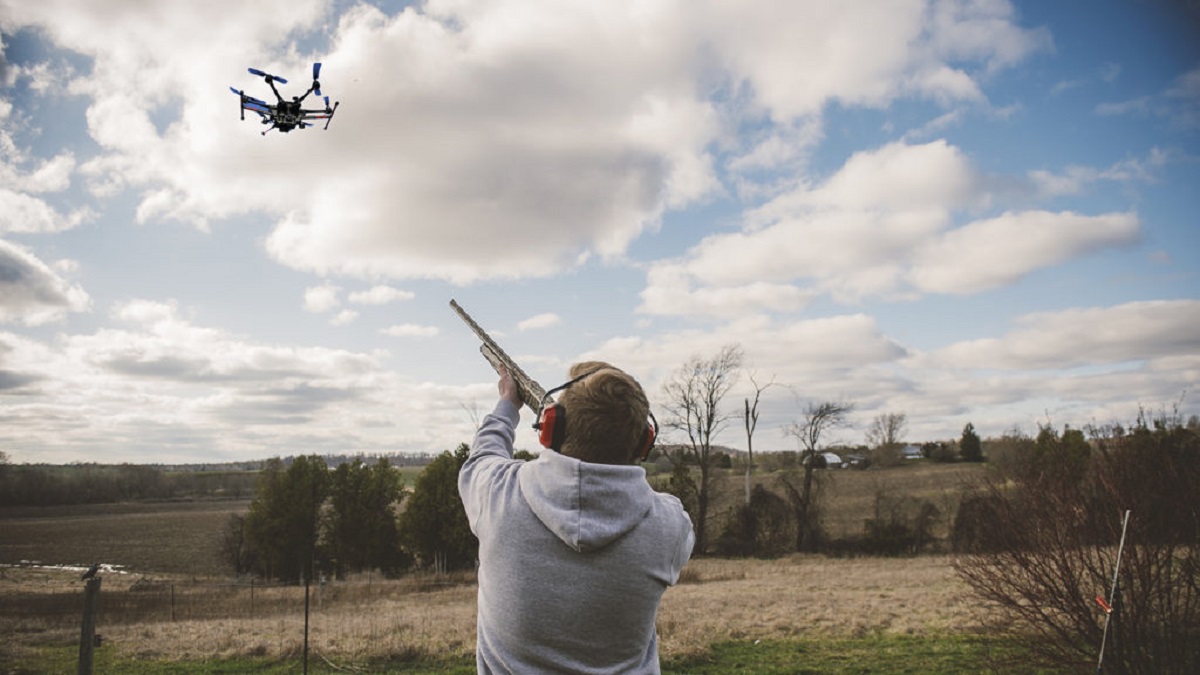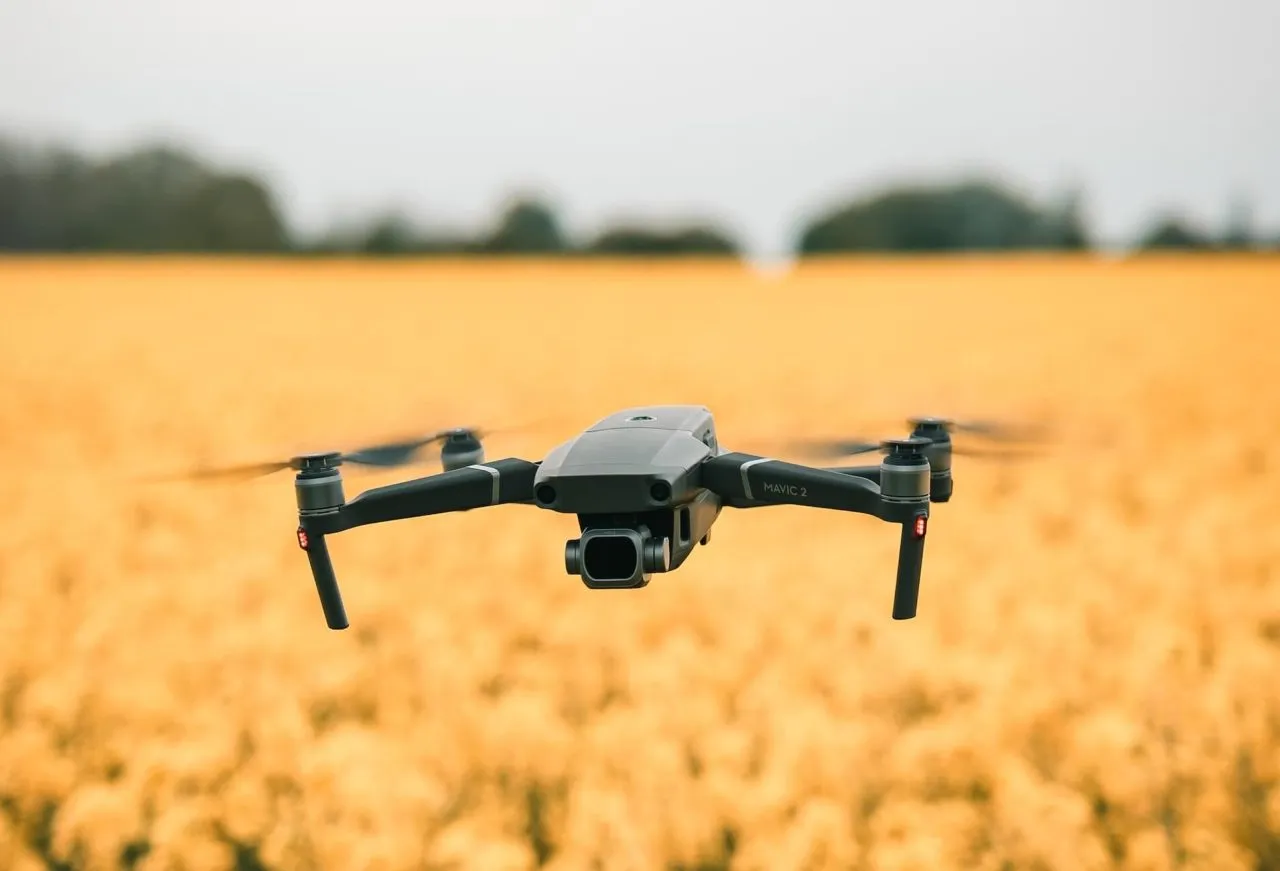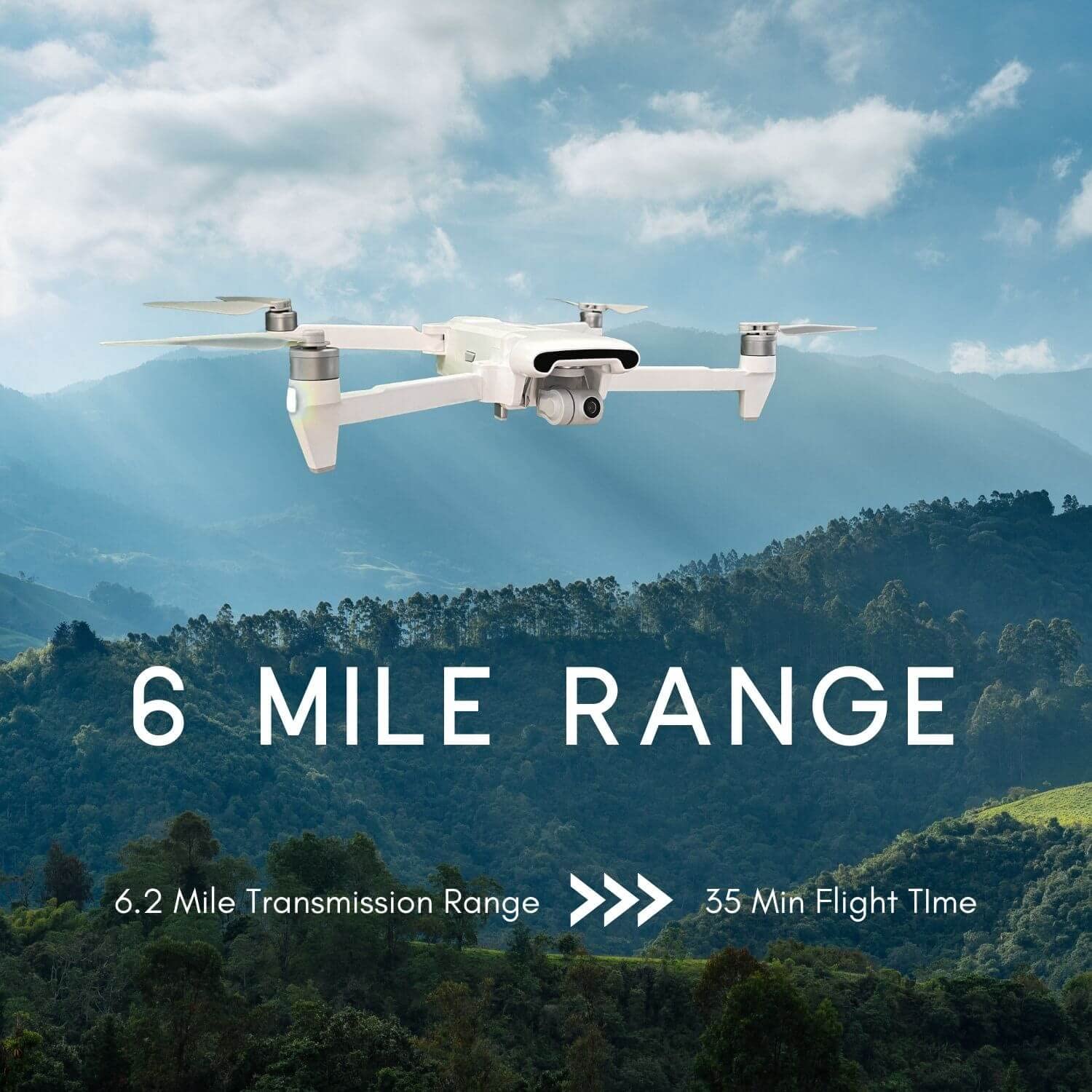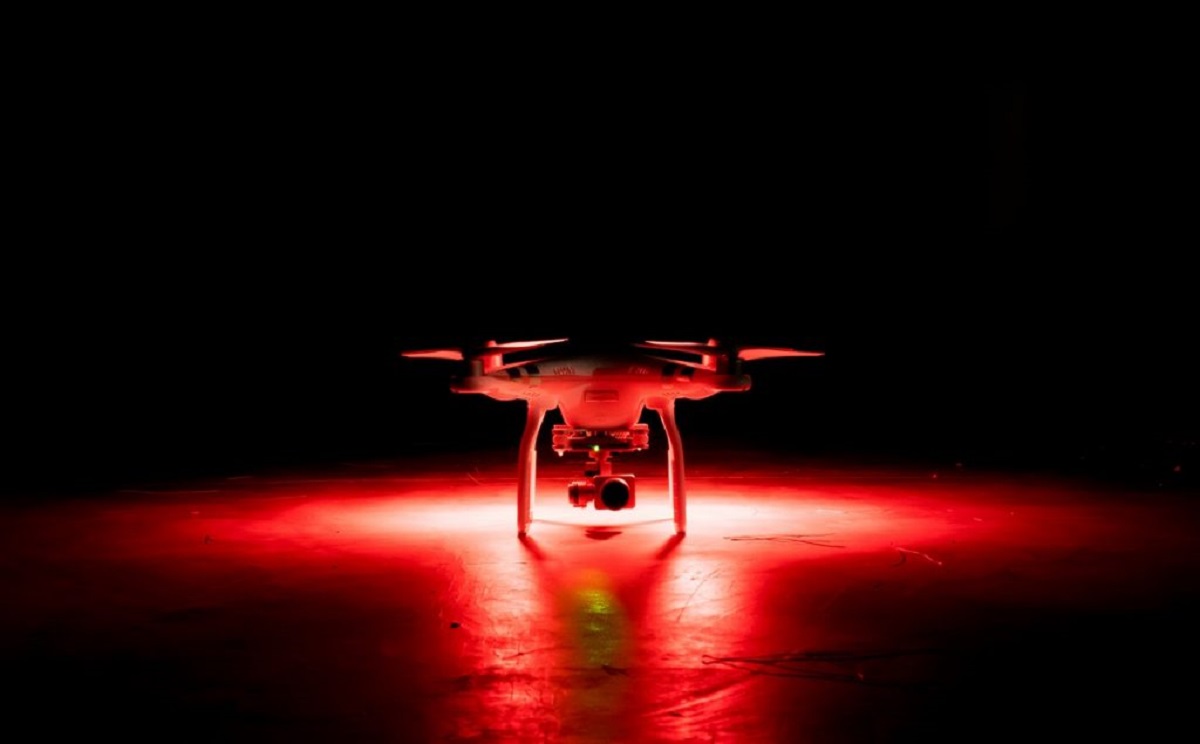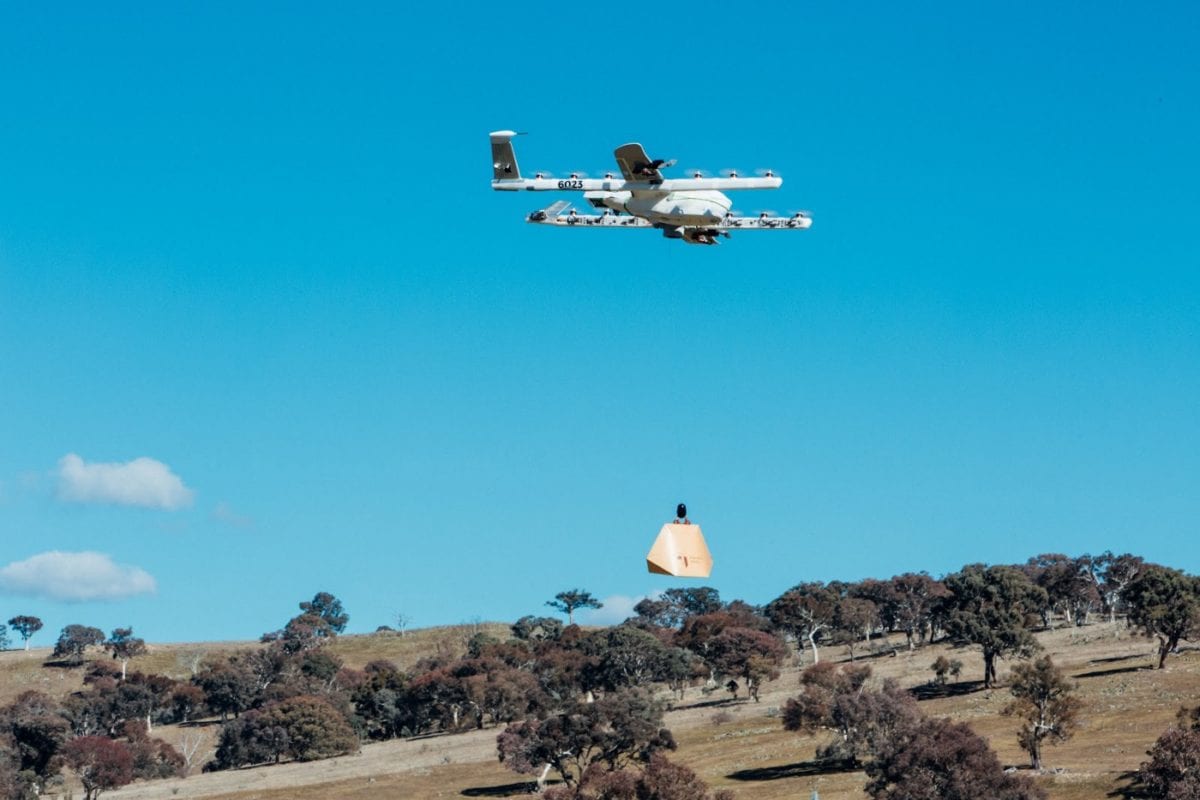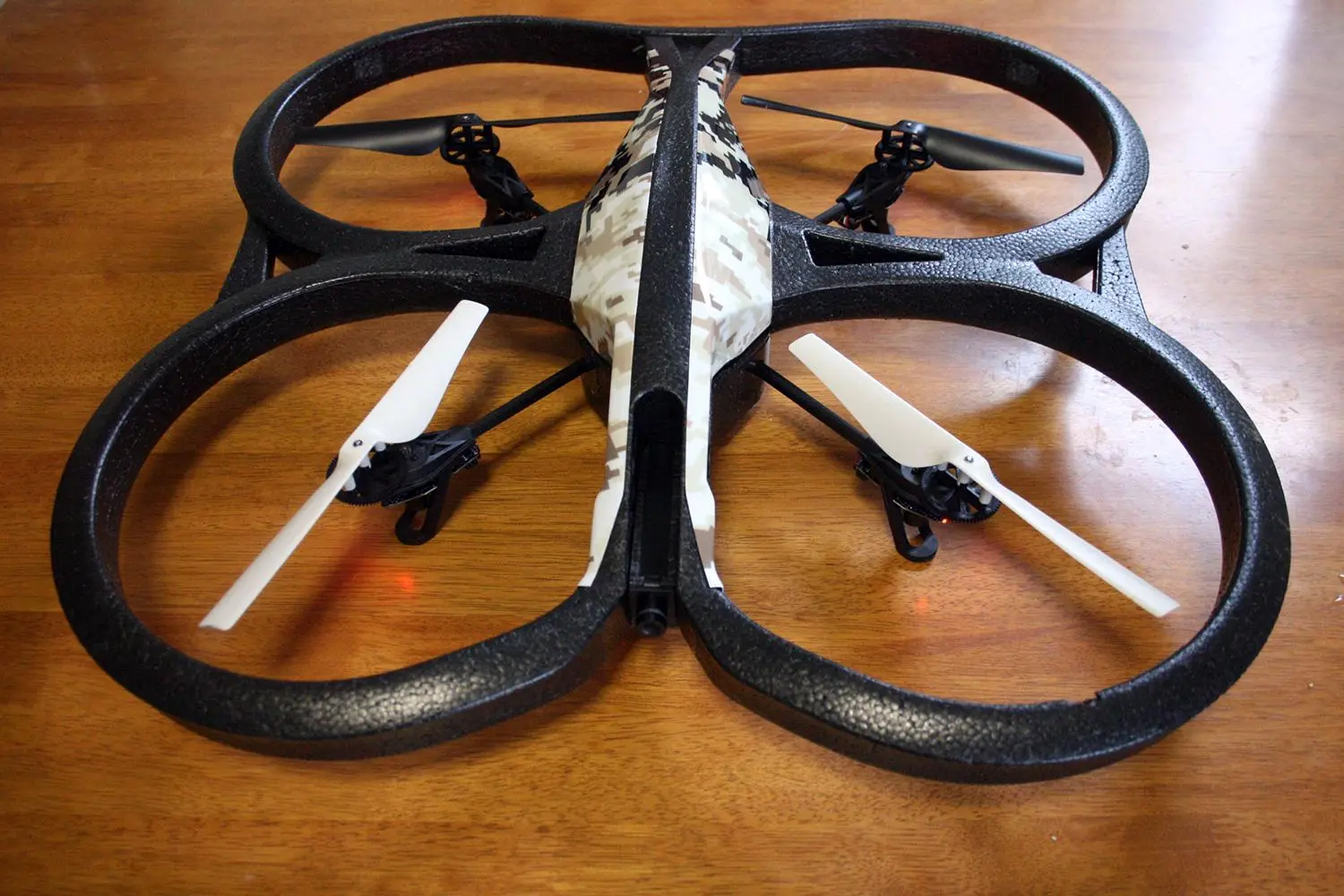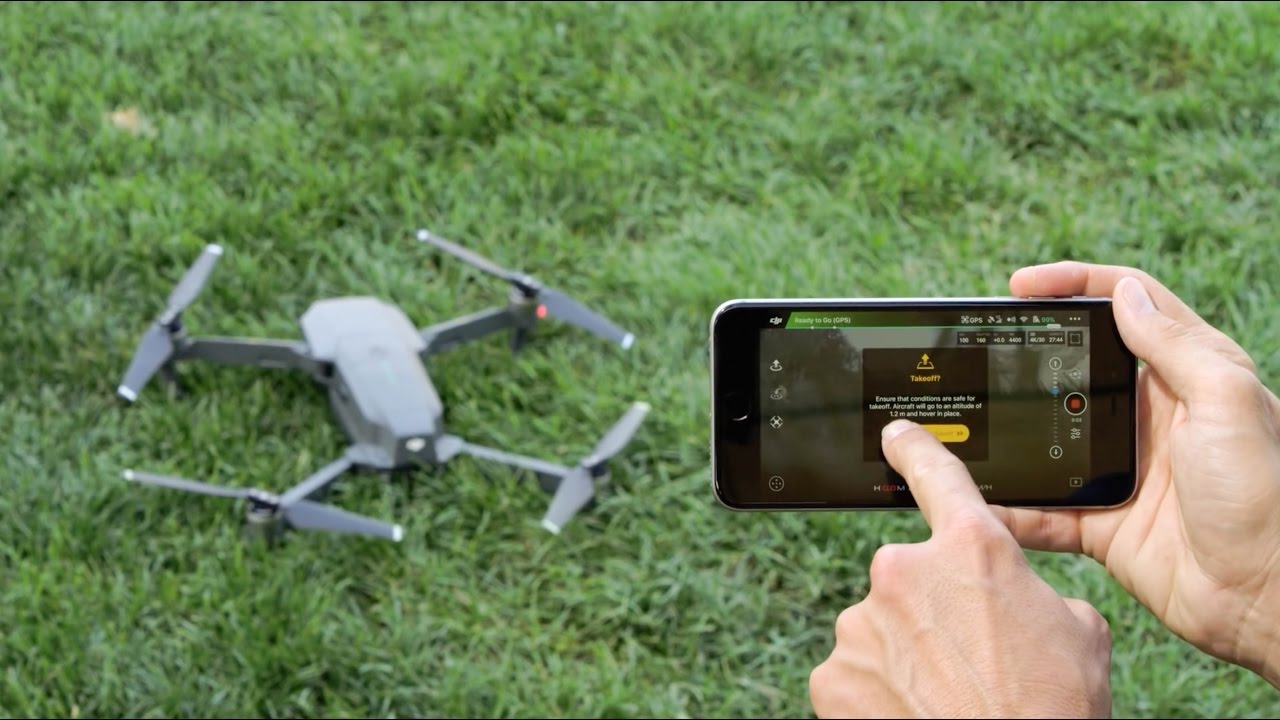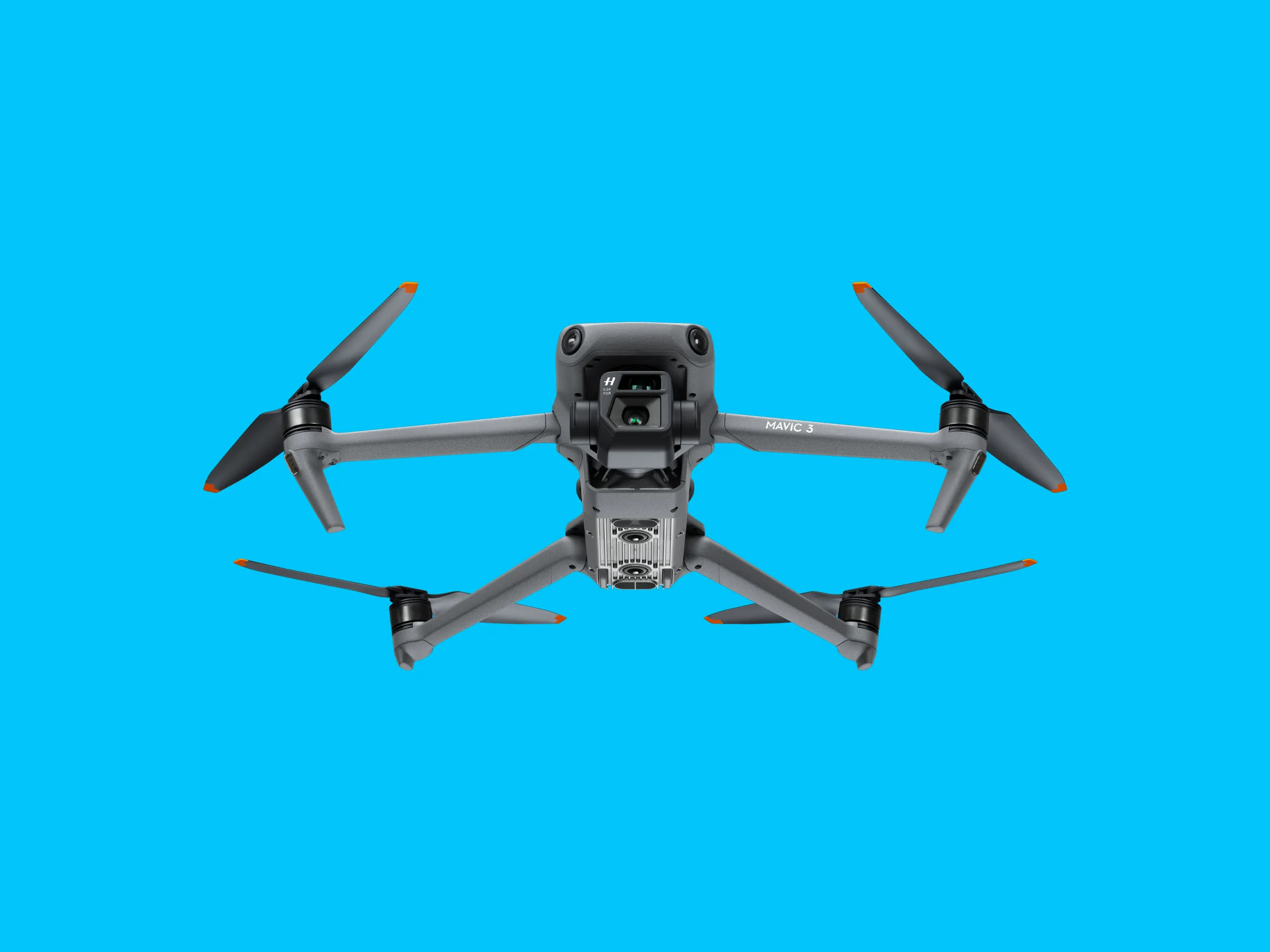The Definition of a Drone
A drone, also known as an unmanned aerial vehicle (UAV), is a remote-controlled aircraft that operates without a pilot on board. Drones are equipped with various sensors, cameras, and other advanced technologies that allow them to navigate autonomously or be controlled remotely by a human operator.
Originally designed for military purposes, drones have found their way into various industries and consumer markets due to their versatility and capabilities. They have become increasingly popular for recreational, commercial, and even humanitarian applications.
What sets drones apart from traditional aircraft is their ability to fly in a wide range of environments, including areas that are difficult or dangerous for humans to access. Drones can be small and lightweight or large and capable of carrying heavy payloads, depending on their intended use.
One key defining characteristic of a drone is its capability for vertical take-off and landing (VTOL). This means that drones can hover in place, take off and land vertically, and maneuver in three-dimensional space, making them highly agile and adaptable.
Drones are typically powered by electric motors, which provide efficient and quiet propulsion. This allows them to operate with minimal noise pollution, ensuring a low environmental impact.
Another important aspect of drones is their ability to capture and transmit data in real-time. Many drones are equipped with advanced cameras and sensors that can capture high-resolution photos and videos, as well as collect other types of data, such as temperature, humidity, and GPS coordinates. This data can then be analyzed and used for various applications, including aerial photography, surveillance, mapping, agriculture, and more.
Overall, the definition of a drone encompasses a wide range of unmanned aerial vehicles that are designed for different purposes. From recreational drones used for capturing breathtaking aerial shots to industrial drones used for inspecting infrastructure and aiding in search and rescue operations, these versatile aircraft have revolutionized many industries and opened up new possibilities for innovation and exploration.
Different Types of Drones
Drones come in various shapes and sizes, each designed for specific applications and tasks. Understanding the different types of drones available can help you choose the right one for your needs. Here are some of the most common types:
- Recreational Drones: These drones are specifically designed for hobbyists and enthusiasts. They are often lightweight, easy to fly, and equipped with basic features such as a camera or video recording capability. Recreational drones are popular for capturing stunning aerial photographs and videos, as well as for racing and acrobatic maneuvers.
- Commercial Drones: Commercial drones are used for a wide range of professional purposes. They are equipped with more advanced features and capabilities, such as higher-resolution cameras, longer flight times, and collision avoidance systems. These drones are commonly used in industries such as filmmaking, agriculture, construction, and aerial inspections.
- Industrial Drones: Industrial drones are designed for heavy-duty tasks and are often larger and more robust than recreational or commercial drones. They are used in industries such as oil and gas, power line inspection, search and rescue operations, and environmental monitoring. These drones are equipped with specialized sensors, thermal imaging cameras, and other advanced technologies to perform specific tasks.
- Military Drones: Military drones, also known as unmanned combat aerial vehicles (UCAVs), are used by armed forces for reconnaissance, surveillance, and even combat purposes. These drones are equipped with highly advanced technologies, including radar systems, infrared cameras, and weapons payloads. Military drones have revolutionized modern warfare by providing intelligence gathering and precision strike capabilities.
- Delivery Drones: With the rise of e-commerce and the demand for faster delivery services, delivery drones have gained popularity. These drones are designed to transport small packages over short distances, reducing delivery times and minimizing the need for traditional delivery vehicles. Delivery drones are being tested and implemented by companies such as Amazon and DHL in certain regions.
These are just a few examples of the different types of drones available on the market today. Each type has specific features and capabilities tailored to its intended use. Whether you are a hobbyist, a professional in a specific industry, or someone interested in emerging technologies, there is likely a drone out there that suits your needs and allows you to explore the skies from a whole new perspective.
Key Features of Drones
Drones are equipped with various features that enable them to perform a wide range of tasks and operations. Understanding the key features of drones can help you make an informed decision when choosing one for your specific needs. Here are some of the most important features to consider:
- Flight Time: The flight time refers to how long a drone can stay in the air on a single battery charge. It is an important consideration, especially for commercial and industrial applications where longer flight times are desired to cover larger areas or complete complex tasks. Flight times can vary from just a few minutes for smaller recreational drones to over an hour for more advanced models.
- Camera Quality: Many drones come equipped with built-in cameras or have the option to mount cameras. The camera quality, including resolution and stability, is crucial for capturing high-quality aerial photographs and videos. It is recommended to choose a drone with a camera that meets your specific requirements, whether you are a hobbyist capturing breathtaking landscapes or a professional filmmaker looking for cinematic shots.
- GPS and Navigation: GPS (Global Positioning System) is a crucial feature that allows drones to have precise positioning information. This feature enables automatic flight modes, waypoint navigation, and return-to-home functions. Drones with advanced navigation capabilities offer greater stability, allowing for smoother flights, precise controls, and safer operations.
- Obstacle Avoidance: Obstacle avoidance technology uses sensors and cameras to detect obstacles in the drone’s flight path and automatically reroute or stop to avoid collisions. This feature is particularly important for drones used in complex environments or when flying in crowded areas. Obstacle avoidance technology enhances flight safety and reduces the risk of damage to the drone and surrounding objects.
- Range and Transmission: The range of a drone refers to the maximum distance it can fly from the controller or operator. It is important to consider the range of the drone, especially when using it for long-distance applications. Additionally, the transmission system determines how well the drone can send live video feeds or other data back to the controller. Look for drones with reliable and long-range transmission systems for seamless data transfer.
- Flight Modes: Many drones come with different flight modes that offer various automated features and flight patterns. These modes can include follow-me, orbit, waypoint navigation, and even pre-programmed cinematic shots. Flight modes enhance the user experience, allowing for more creative and dynamic aerial shots without requiring advanced piloting skills.
These are just a few key features to consider when selecting a drone. Depending on your specific needs and requirements, there may be additional features that are important to you, such as payload capacity, advanced sensors, waterproofing, or even specific software integrations. Take the time to research and compare different drone models to find the one that best fits your needs and allows you to unlock the full potential of aerial exploration and innovation.
How Drones are Controlled
Drones can be controlled in several ways, depending on the type of drone, its capabilities, and the intended purpose. Here are the common methods used to control drones:
- Remote Control: The most basic and common method of controlling a drone is through a handheld remote control. The remote control is equipped with joysticks and buttons that allow the operator to maneuver the drone in different directions, adjust altitude, and control other flight parameters. Remote control is popular for recreational drones and drones used in racing or aerobatics.
- Mobile Device Apps: Many drones have the ability to be controlled through mobile device applications. By installing the manufacturer’s app on a smartphone or tablet, users can connect to the drone via Wi-Fi or Bluetooth and control it using the device’s touch screen. These apps often provide additional features such as live video streaming, flight planning, and autonomous flight modes.
- Autonomous Flight: Advanced drones are equipped with autonomous flight capabilities, allowing them to fly without direct human input. These drones can be programmed to follow specific flight paths, navigate predefined waypoints, or perform certain tasks autonomously. Autonomous flight is commonly used in aerial surveys, mapping, and inspections where precise and repeatable flights are needed.
- Gesture Control: Some consumer drones offer gesture control features, allowing users to control the drone’s movements using hand gestures. This can be as simple as waving a hand to initiate takeoff or landing or using specific gestures to control the drone’s flight path. Gesture control provides an intuitive and hands-free way of controlling the drone, making it accessible to beginners and adding an element of interactivity.
- Follow Me Mode: Many drones come with a Follow Me mode, which enables the drone to track and follow a person or a moving object. This is done by using GPS or visual recognition technology to keep the drone in a fixed position relative to the subject. Follow Me mode is particularly useful for capturing action shots during outdoor activities such as running, cycling, or skiing.
It’s important to note that regardless of the control method used, the operator must abide by local regulations and guidelines for safe and responsible drone use. This includes maintaining line of sight with the drone, flying within designated airspace, respecting privacy, and avoiding sensitive areas such as airports or restricted zones.
As technology continues to advance, new control methods may emerge, allowing for even more precise and immersive control over drones. The choice of control method depends on the user’s experience, the complexity of the drone’s capabilities, and the intended application. Whether you’re an experienced pilot or a beginner, there’s a control method available to suit your needs and help you unlock the full potential of drone flight.
Drone Applications
Drones have become increasingly popular and are being used in a wide range of industries and applications. Their versatility and capabilities make them valuable tools for various tasks that were previously difficult, time-consuming, or even impossible to accomplish. Here are some common applications of drones:
- Aerial Photography and Videography: Drones equipped with high-resolution cameras are commonly used for capturing stunning aerial photographs and videos. They provide a unique perspective and allow photographers and filmmakers to capture breathtaking shots from angles that would otherwise be inaccessible.
- Mapping and Surveying: Drones with specialized sensors and cameras are utilized in surveying and mapping applications. They can quickly and accurately capture images and data of large areas, enabling professionals in fields such as land surveying, urban planning, and archaeology to create detailed maps, 3D models, and topographic surveys in a fraction of the time it would take using traditional methods.
- Search and Rescue: Drones equipped with thermal imaging cameras and GPS capabilities are invaluable in search and rescue operations. They can quickly cover large areas, identify heat signatures, and relay crucial information to rescue teams. Drones are particularly useful in locating missing persons in remote or inaccessible areas.
- Agriculture and Crop Monitoring: Drones equipped with multispectral or infrared cameras are used in agriculture for crop monitoring and analysis. They can capture detailed information about crop health, identify areas of concern, detect pests or diseases, and help farmers optimize irrigation and fertilization strategies for more efficient and sustainable crop management.
- Infrastructure Inspection: Inspecting infrastructure such as bridges, buildings, power lines, and pipelines can be time-consuming and hazardous. Drones equipped with cameras or sensors are used to inspect these structures, providing close-up views and detailed imagery to identify any potential issues or damages, without the need for expensive equipment or putting human inspectors at risk.
- Delivery and Logistics: Several companies are exploring the use of drones for delivery services. Small drones are being tested for delivering packages to remote or hard-to-reach areas, reducing delivery times and costs. Drones are also used for inventory management in warehouses, allowing for quick and efficient stocktaking processes.
- Environmental Monitoring: Drones are used in environmental monitoring programs to gather data on ecosystems, wildlife populations, and geological formations. They can traverse challenging terrain, collect high-resolution imagery, and provide valuable insights for scientists and conservationists in monitoring and protecting our natural resources.
These examples represent just a fraction of the many applications of drones. As technology continues to advance, drones are likely to find their way into even more sectors, providing innovative solutions and opening up new possibilities. However, it is important to note that drone use must be done responsibly and in compliance with local regulations to ensure safety, privacy, and respect for the environment.
Regulations and Restrictions for Drone Use
As the popularity of drones continues to grow, governments around the world have implemented regulations and restrictions to ensure safe and responsible drone use. These regulations are in place to protect the public, maintain privacy, and prevent interference with other aircraft. Here are some common regulations and restrictions for drone use:
- Registration: Many countries require drone owners to register their drones with the appropriate aviation authority. This helps establish accountability and ensures that drone operators are aware of the rules and regulations they need to follow.
- Airspace Restrictions: Drones are prohibited from flying in certain areas, such as airports, military bases, national parks, and other sensitive locations. It is important for drone operators to familiarize themselves with the airspace restrictions in their region and avoid flying in prohibited areas to prevent accidents and uphold public safety.
- Flight Altitude and Distance Limitations: Many countries impose altitude and distance limitations on drone flights. These limitations help prevent interference with manned aircraft and safeguard against potential collisions. Drone operators must respect these limits and ensure they are flying within the legal boundaries.
- Visual Line of Sight: In most regions, drone operators are required to maintain visual line of sight with their drones during flight. This means that the operator must be able to see the drone at all times without the use of visual aids, such as binoculars or first-person view (FPV) goggles. Maintaining visual contact ensures better control and reduces the risk of accidents.
- Privacy and Data Protection: When flying a drone, it’s important to respect the privacy of others. Avoid flying over private property without permission and refrain from capturing images or videos that infringe upon someone’s privacy. Additionally, it is crucial to handle any collected data in compliance with relevant privacy and data protection laws.
- Operating Time and Weather Conditions: Some countries have regulations regarding the operating time of drones, prohibiting flights during certain hours, such as at night or during unfavorable weather conditions, to ensure safety. Checking local regulations and observing weather conditions before flying is essential to prevent accidents and protect the drone.
It is important for drone operators to familiarize themselves with the specific regulations and restrictions in their country or region. Ignorance of the laws is not an excuse, and failing to comply with regulations can result in fines, confiscation of the drone, or other legal consequences.
As technology advances and drones become more integrated into society, regulations are likely to evolve. Drone operators should stay informed about any updates or changes in regulations to ensure compliance and foster a responsible and safe drone community.
Advancements in Drone Technology
Technological advancements have significantly contributed to the evolution of drone capabilities and functionality. As research and development continue to progress, new features and innovations are being introduced to enhance drone performance and expand their potential uses. Here are some of the notable advancements in drone technology:
- Improved Battery Life: Battery technology has improved, allowing for longer flight times and increased overall drone endurance. This advancement is particularly beneficial for commercial and industrial applications, as it enables drones to cover larger areas or complete complex tasks without the need for frequent battery changes or recharging.
- Obstacle Avoidance Systems: Drones are now equipped with advanced sensors and cameras that enable obstacle detection and avoidance capabilities. This technology helps in navigating complex environments, reducing the risk of collisions, and improving overall flight safety. Obstacle avoidance systems have particularly enhanced the use of drones in industries such as infrastructure inspection and aerial cinematography.
- Intelligent Flight Modes: Many drones now come with pre-programmed flight modes that allow for more creative and sophisticated aerial shots. These modes include Follow Me, Orbit, Waypoint Navigation, and Cable Cam, which enable autonomous flight patterns and precise control over the drone’s movement. Intelligent flight modes make it easier for users to capture professional-grade footage and execute complex flight maneuvers.
- Enhanced Camera Technology: Camera technology in drones has seen significant advancements, with higher resolution sensors, better stabilization systems, and increased dynamic range. These improvements have revolutionized aerial photography and videography, enabling stunning imagery with greater detail, improved low-light performance, and reduced camera shake.
- Integration of Artificial Intelligence (AI): Drones are now being equipped with AI-powered features, such as object recognition and tracking. This allows drones to autonomously identify and follow specific subjects or objects, making them highly capable for applications such as tracking vehicles, wildlife research, or even security surveillance.
- Swarm Technology: Swarm technology enables multiple drones to work together, coordinated by a central system. This advancement has incredible potential in various fields, such as disaster response, search and rescue operations, or even entertainment events. Swarm technology allows for synchronized actions, forming patterns, or performing complex tasks that would not be possible with a single drone.
These advancements in drone technology are pushing the boundaries of what drones can do and expanding their potential applications. As research and development continue, we can anticipate further advancements, including improved AI capabilities, longer flight ranges, faster speeds, and more efficient propulsion systems. These developments will undoubtedly open up new possibilities and create exciting opportunities across industries and domains.
Choosing the Right Drone for You
With the wide variety of drones available on the market, choosing the right one can be overwhelming. Determining the right drone for your needs depends on several factors that you should consider before making a purchase. Here are some key considerations to help you choose the right drone:
- Purpose and Intended Use: Determine the primary purpose for which you will be using the drone. Are you looking for a recreational drone for aerial photography? Or do you need a professional-grade drone for commercial applications like surveying or inspections? Clarifying your intended use will help narrow down your options.
- Experience Level: Consider your experience level as a drone operator. If you are a beginner, it may be best to start with a user-friendly, entry-level drone that is easy to fly and has basic features. For more experienced users, advanced features and capabilities may be preferred to expand creative possibilities.
- Budget: Your budget will play a significant role in determining the options available to you. Drones vary greatly in terms of price, depending on factors such as size, features, camera quality, and build quality. Set a realistic budget and prioritize the features that are most important to you within that range.
- Flight Time: Consider the flight time of the drone and whether it aligns with your needs. If you require longer flight times for a specific application, choose a drone with a longer battery life or consider purchasing extra batteries.
- Camera Quality: If aerial photography or videography is your main focus, consider the quality and capabilities of the drone’s camera. Look for drones with high-resolution cameras, gimbal stabilization systems, and the ability to shoot in RAW or other desired formats.
- Portability: If you plan on traveling with your drone or need a portable option, consider the size and weight of the drone. Compact and foldable designs are great for ease of transport.
- Regulations and Restrictions: Familiarize yourself with the local regulations and restrictions regarding drone usage in your area. Ensure that the drone you choose complies with these regulations, such as weight restrictions, flight range limitations, and other relevant guidelines.
Researching and reading reviews on different drone models can be helpful in understanding their features, performance, and user experiences. Look for reputable brands with a history of quality and customer support. Additionally, consider reaching out to experienced drone operators or joining online communities to gather insights and recommendations.
Ultimately, choosing the right drone comes down to finding a balance between your budget, intended use, and desired features. Take the time to assess your needs, compare different models, and make an informed decision that allows you to enjoy your drone flying experience to the fullest.
Popular Drone Brands and Models
With the increasing popularity of drones, several brands have emerged as leaders in the market, offering a wide range of models to suit different needs and budgets. Here are some popular drone brands and models:
- DJI: DJI is one of the most well-known and respected drone brands, offering a range of high-quality drones for both consumer and professional use. Popular models include the DJI Mavic series, such as the Mavic Air 2 and the Mavic Pro, known for their compact design, advanced features, and excellent camera quality.
- Parrot: Parrot is a leading brand that offers drones for both recreational and professional use. Their popular consumer drone models include the Parrot ANAFI, known for its 4K HDR camera and lightweight design, and the Parrot Bebop 2, which offers a good balance of features and affordability.
- Autel Robotics: Autel Robotics is gaining recognition with its lineup of high-performance drones. The Autel Evo and Autel Evo II are popular models that offer impressive camera capabilities, stable flight performance, and long flight times.
- Yuneec: Yuneec is known for its range of consumer and professional drones. The Yuneec Typhoon H Pro is a popular model that features a 4K camera, obstacle avoidance, and retractable landing gear. Yuneec also offers the Mantis Q, a compact and portable drone with features like voice control and intelligent flight modes.
- GoPro: GoPro, a well-known brand in the action camera industry, offers the GoPro Karma, a foldable drone that allows users to attach their GoPro cameras for stunning aerial footage.
- Holy Stone: Holy Stone offers a range of affordable drones suitable for beginners and recreational users. Their popular models include the Holy Stone HS720 and Holy Stone HS165, which offer decent camera quality and flight stability.
These are just a few examples of popular drone brands and models, representing different price ranges and capabilities. It is important to research and compare the features, specifications, and customer reviews of different models to find the one that best fits your needs and budget.
Keep in mind that the drone market is constantly evolving, and new models with advanced features are regularly released. Stay updated on the latest releases and technological advancements to make an informed decision and choose a drone that provides the best value for your investment.
Future of Drones and Potential Challenges
The future of drones holds tremendous potential for innovation and advancements in various industries. As technology continues to evolve, here are some areas where drones are expected to have a significant impact:
- Delivery Services: Drone delivery services have the potential to transform the way goods are transported, offering faster and more efficient deliveries, especially in remote or hard-to-reach areas. As regulations and infrastructure develop, we can expect to see more widespread implementation of drone delivery systems.
- Infrastructure Inspection and Maintenance: Drones are increasingly being used for inspecting infrastructure such as bridges, power lines, and pipelines, reducing the need for human inspectors to perform dangerous or time-consuming tasks. With advancements in sensor technology and AI, drones will play a crucial role in improving efficiency and reducing costs in infrastructure inspection and maintenance.
- Public Safety and Emergency Response: Drones equipped with thermal imaging cameras, AI capabilities, and real-time data transmission can greatly assist in search and rescue operations, disaster response, and firefighting. They can quickly assess dangerous environments, locate missing persons, and provide valuable situational awareness to first responders.
- Environmental Conservation: Drones are proving to be instrumental in environmental monitoring and conservation efforts. They can help monitor wildlife populations, identify habitat destruction, track deforestation, and even aid in reforestation efforts. Drones provide valuable data for scientists and researchers to make informed decisions and take proactive measures to protect our natural resources.
- Agriculture and Crop Management: The use of drones in agriculture is expected to grow significantly. Drones equipped with specialized sensors and cameras can monitor crop health, detect pest infestations, optimize irrigation management, and even assist in precision pesticide application. This can improve crop yields, reduce costs, and promote sustainable farming practices.
Although the future of drones looks promising, there are also challenges that need to be addressed, including:
- Regulation and Airspace Management: As drone usage increases, regulations and policies must evolve to ensure safe and responsible operations. The challenge lies in balancing the need for innovation and growth with maintaining privacy, security, and airspace management.
- Technological Limitations: While drone technology continues to advance quickly, there are still limitations to address, such as battery life, flight range, and payload capacity. Continued research and innovation are necessary to overcome these limitations and further enhance drone capabilities.
- Privacy and Security Concerns: Drones equipped with cameras have raised concerns about privacy and the potential for misuse. Striking the right balance between the benefits of drone technology and individual privacy rights will be an ongoing challenge that requires legal and ethical considerations.
- Public Acceptance: Increasing public acceptance of drones is crucial for their widespread adoption. Educating the public about the benefits of drones, addressing concerns, and ensuring responsible and considerate drone use will contribute to their acceptance and integration into society.
Despite these challenges, the future of drones remains exciting. With continued technological advancements, collaboration between industry stakeholders, and responsible drone use, drones have the potential to revolutionize various sectors and improve our lives in countless ways.







